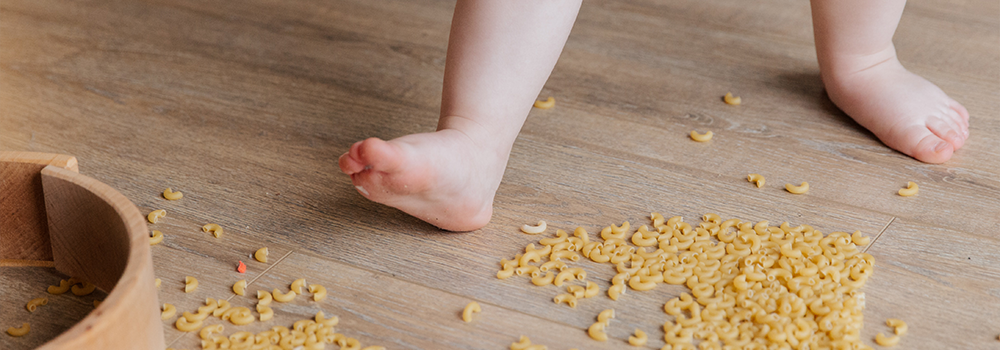The Power of Touch on Emotion

"Man's mind, once stretched by a new idea, never regains its original dimensions."
— Oliver Wendell Holmes
This is one of my favorite quotes. In fact, I love any quote that has to do with learning, expanding oneself and seeking self-improvement. I have always held the belief that our ability to learn never stops and would go so far as to say it is our responsibility to continue to learn and challenge our knowledge base. This is especially true for professionals in health and wellness as our understanding of the human body, physiology and pathology is always expanding.
My approach as a clinician has continuously grown and expanded from simply foot biomechanics and short foot exercise to brain, breath, emotion and the neuroplasticity of barefoot science.
One aspect I want to share with you is how our ability to discriminate surfaces, textures and touch is actually linked to emotional stability in children and adults.
From Survival to Sophistication
Touch is a powerful input system that both allows us to navigate and manipulate our environment (i.e., feeling the sharpness of rocks under our feet cues us to walk slower) and allows others to navigate and manipulate our environment (i.e. feeling someone grabbing you strongly warns you of a possible attack).
Now when it comes to evolution – touch is no different. The art of touch has gone from simply survival (is this a threat or not) to more finite and discriminative. This higher processing of touch refers to both the hands and feet - allows us to coordinate complex tasks such as micro-dissection surgery to the ability to read braille.
In present day man both the protective and discriminative aspects of touch still exist through a relationship that researchers call a dualism. This dualism of touch requires balanced interpretation of touch. Any deviation towards protective > discriminative and the individual has a heightened emotional “fight or flight” response to touch.
Enter the Tactility Defensive Child
The best example of this touch imbalance or altered relationship with touch can be observed is in a tactility sensitive or defensive child. Have you ever seen or experienced a child who doesn’t like the texture of certain fabrics on their skin or doesn’t eat certain foods because of the texture? Have you seen or experienced a child that doesn’t like to be hugged by other children or gets anxious and hostile when in close proximity to other people?
These are just a few examples of touch triggering a sympathetic/survival/fight or flight response in a child.
Research has shown that when these children are touched or touch a texture that they are defensive to, they will get a spike in cortisol levels which is indicative of a stress response.
It is well understood and accepted that elevated cortisol - even in children - can negatively affect the immune system (think auto-immune conditions and allergies), fat deposition (increase in childhood obesity) and learning / memory (ADHD, Autism, depression).
This is why I always say sensory before cognitive. In order to allow the optimal cognitive development of children (learning, memory, attention) we need to ensure the foundation of sensory stimulation – and to their relationship to sensory stimulation is healthy.
(To learn more on this topic please check research Sensory Integration by A.J. Ayres)
Using Barefoot Science to Re-Balance Touch & Emotion
When it comes to Sensory Integration there are three main areas that need to be optimized during childhood development – vestibular, proprioceptive and tactile.
What’s interesting is these are the main somatosensory input systems to allow human locomotion – with human locomotion being linked to higher level cognitive functioning and emotional awareness.
The bare foot is a powerful tactile (touch) and proprioceptive-rich area of the body that in upright stance is the only contact point between the body and the ground.
Increased and earlier footwear use in children coupled with less foot sensory stimulation and exploration has paralleled the rise in ADHD, Sensory Processing Disorders, emotional disconnection and aggression in children.
Could there be a link? I would say so!
But it is not too late. We can use the understanding of barefoot science to help children and adults with sensory processing disorders as well as anyone along this spectrum.
Below are a few guidelines I recommend for integrating barefoot stimulation with these individuals:
-
Start with small doses and increase duration
- Those with tactile defensiveness can reach sensory fatigue very quickly so start slow and gradually increase based on their response. Also allow them to control the amount of stimulation.
-
Ensure the feeling of safety is re-enforced throughout their barefoot stimulation and combat any anxiety that may arise
- Discuss the concern of anxiety and have them mentally prepared for the barefoot / sensory stimulation that will be happening throughout the session. Talk about how it is a positive association and describe the texture or sensations they are feeling under their feet.
-
Avoid sharp / defined textures in the beginning but rather start with more strong / broad stimulation
- Progress from flat stones to smaller stones progressively based on their acclimation to textures
-
Reinforce how barefoot stimulation is linked to safety and integrate foot stimulation into any vagal tone training, diaphragmatic breathing or cranial sacral therapy programming
- I recommend my patients use the Naboso Mats and Naboso Insoles throughout their training or day to day to keep the autonomic nervous system balanced
Learn more at naboso.com